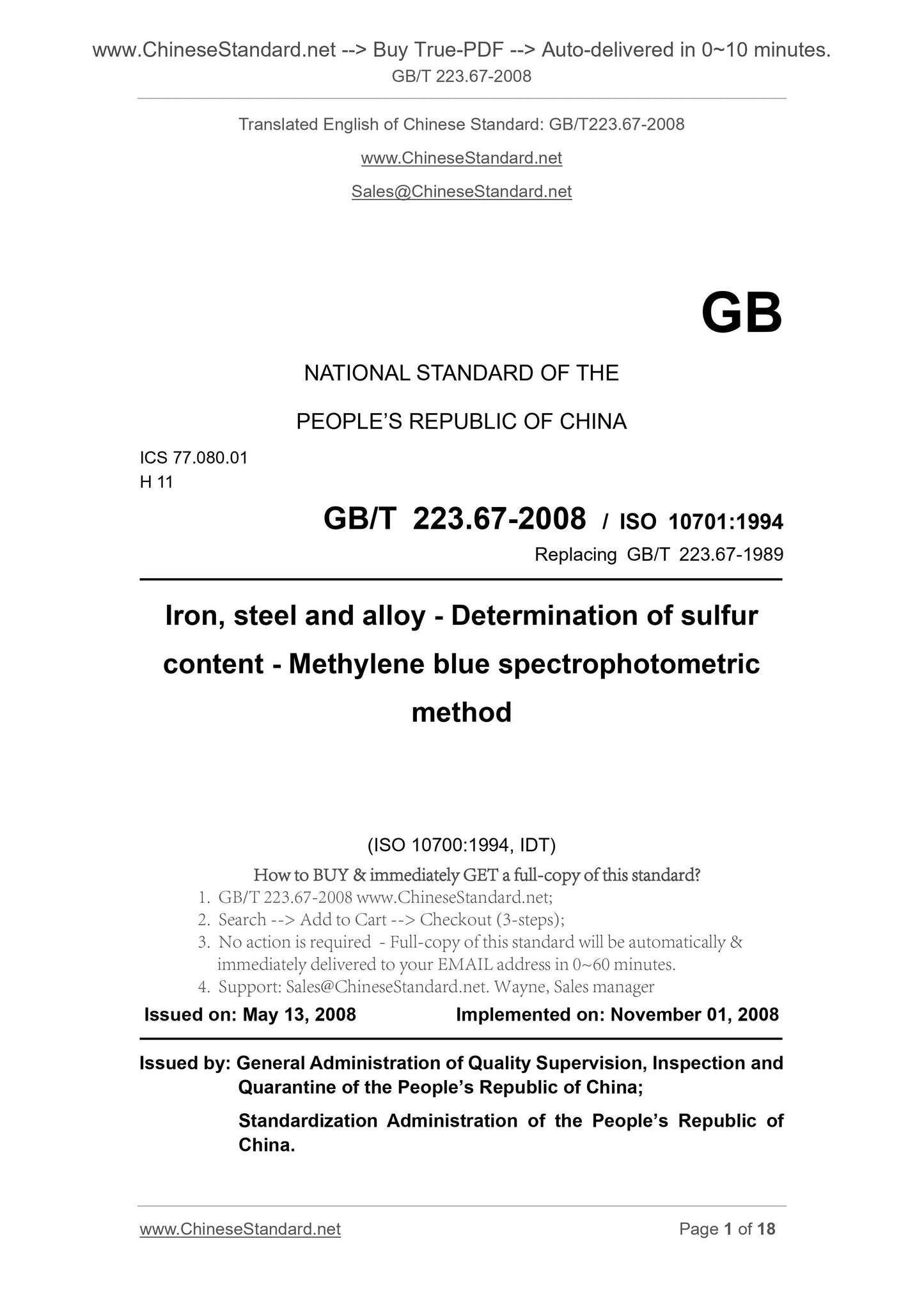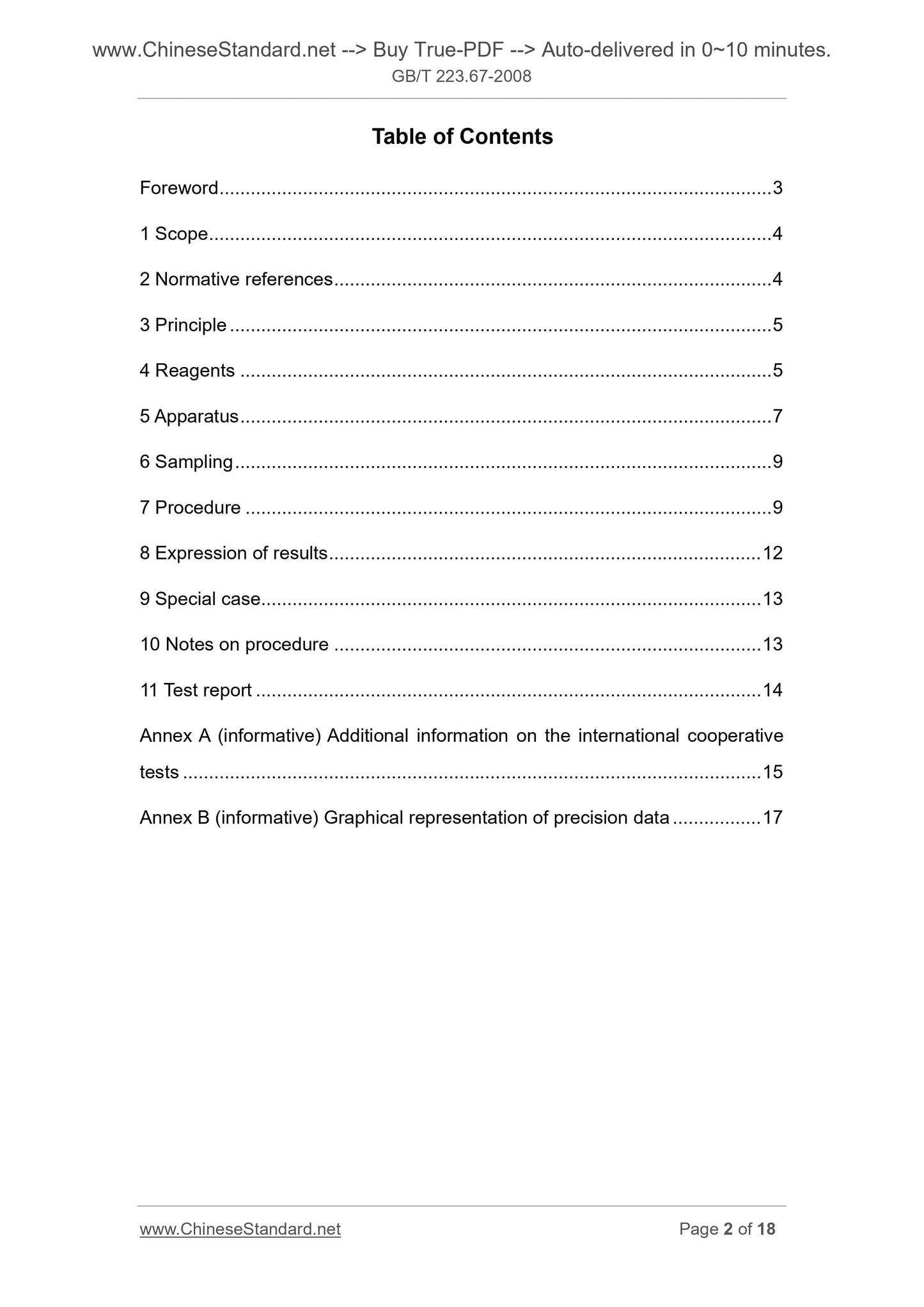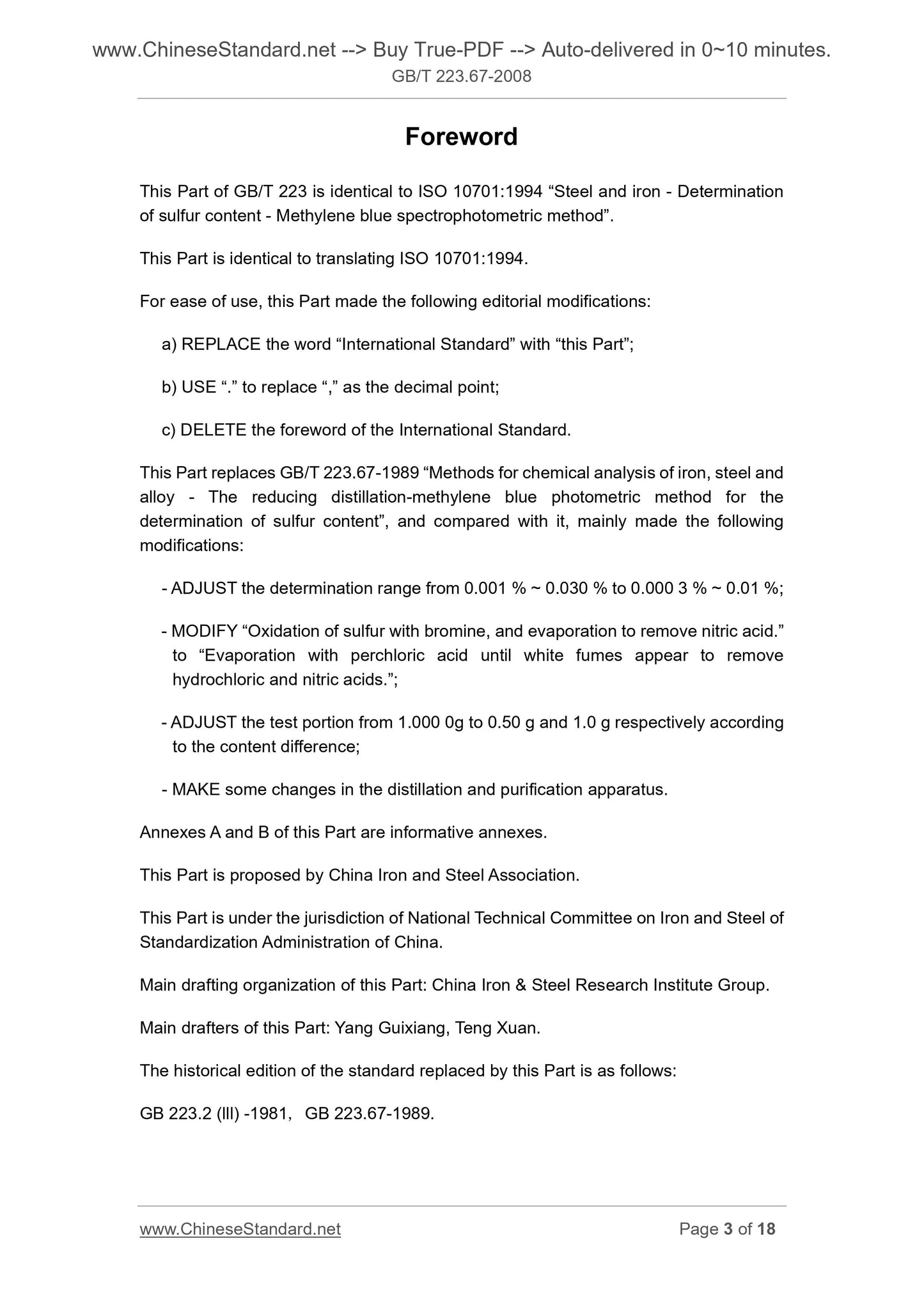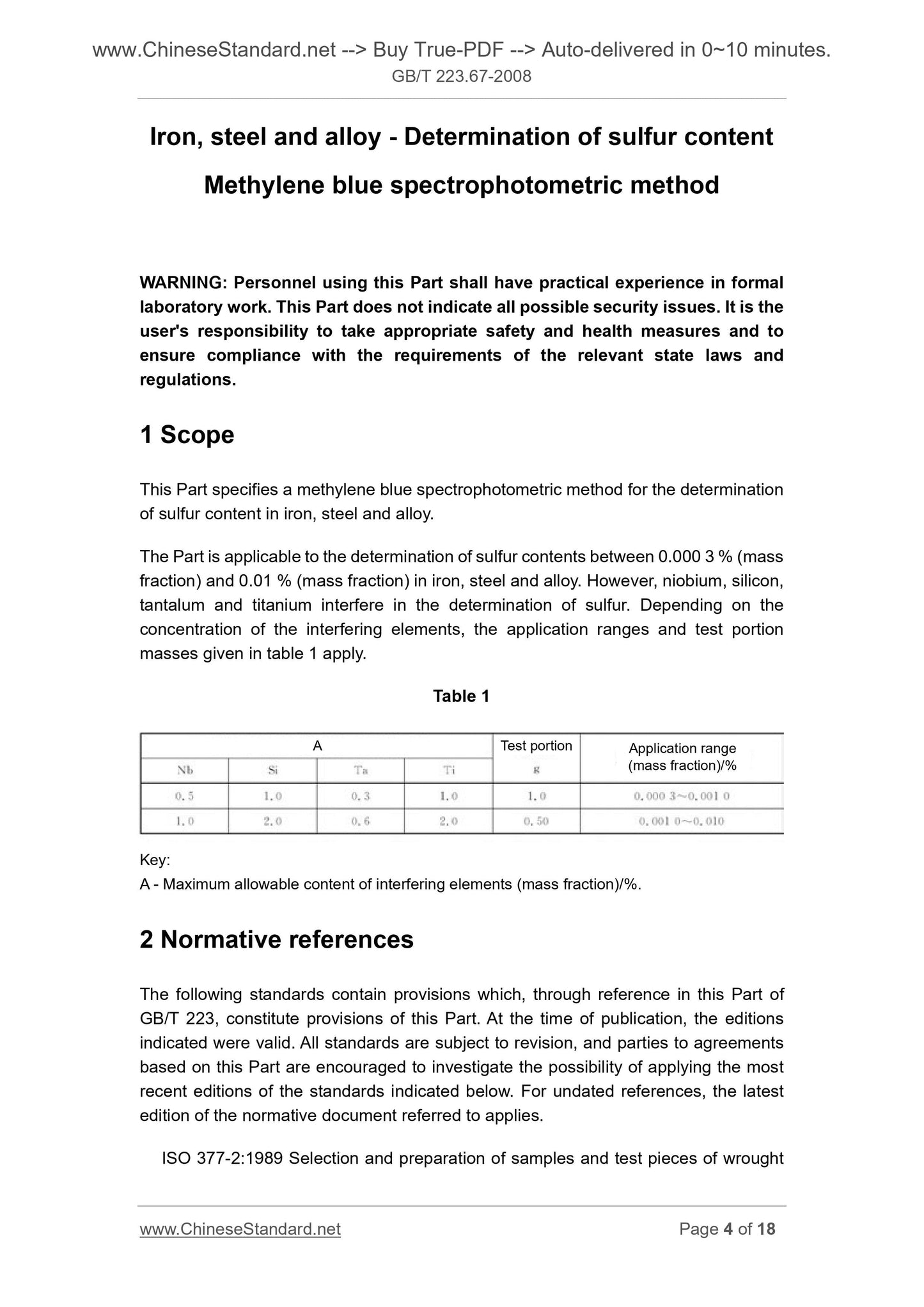1
/
of
4
www.ChineseStandard.us -- Field Test Asia Pte. Ltd.
GB/T 223.67-2008 English PDF (GB/T223.67-2008)
GB/T 223.67-2008 English PDF (GB/T223.67-2008)
Regular price
$70.00
Regular price
Sale price
$70.00
Unit price
/
per
Shipping calculated at checkout.
Couldn't load pickup availability
GB/T 223.67-2008: Iron, steel and alloy -- Determination of sulfur content -- Methylene blue spectrophotometric method
Delivery: 9 seconds. Download (and Email) true-PDF + Invoice.Get Quotation: Click GB/T 223.67-2008 (Self-service in 1-minute)
Newer / historical versions: GB/T 223.67-2008
Preview True-PDF
Scope
GB/T 223 provisions of this part of the Methylene blue spectrophotometric determination of sulfur content in steel and alloy.This section applies to steel and alloy mass fraction of 0.0003% ~ 0.01% sulfur content determination. Niobium, Silicon, Tantalum and Titanium to Sulfur
Determination of interference. According to the content of interfering elements, the applicable range and the amount of sample are given in Table 1.
Table 1
Interference elements of the maximum allowable content (mass fraction) /%
Nb Si Ta Ti
The amount of sample
Application (mass fraction) /%
0.5 1.0 0.3 1.0 1.0 0.0003 ~ 0.0010
1.0 2.0 0.6 2.0 0.50 0.0010 ~ 0.010
Basic Data
| Standard ID | GB/T 223.67-2008 (GB/T223.67-2008) |
| Description (Translated English) | Iron, steel and alloy -- Determination of sulfur content -- Methylene blue spectrophotometric method |
| Sector / Industry | National Standard (Recommended) |
| Classification of Chinese Standard | H11 |
| Classification of International Standard | 77.080.01 |
| Word Count Estimation | 12,141 |
| Date of Issue | 2008-05-13 |
| Date of Implementation | 2008-11-01 |
| Older Standard (superseded by this standard) | GB/T 223.67-1989 |
| Quoted Standard | ISO 377-2-1989; ISO 385-1-1984; ISO 648-1977; ISO 1042-1983; ISO 3696-1987; ISO 5725-1986 |
| Adopted Standard | ISO 10701-1994, IDT |
| Regulation (derived from) | National Standard Approval Announcement 2008 No.8 (Total No.121) |
| Issuing agency(ies) | General Administration of Quality Supervision, Inspection and Quarantine of the People's Republic of China, Standardization Administration of the People's Republic of China |
| Summary | This standard specifies the methylene blue spectrophotometric determination of sulfur in steel and alloy content. This section applies to steel and alloys for the determination of the mass fraction of 0. 003% to 0. 01% sulfur content. Niobium, silicon, tantalum and titanium for the determination of sulfur interference. According to the content of interfering elements, the scope and amount of sample are given in Table 1. |
Share







